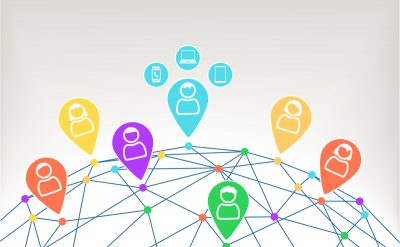CPaaS – digital path for communication
In this 21st century, we all expect a seamless experience when it comes to a digital lifestyle, whether it is chatting with friends, contacting a brand for consumer support, planning a trip, or making a purchase. Therefore, businesses and app developers around the corner are offering an enhanced consumer experience that is equal to product quality, weight, service, or the app itself.
Digital transformation helps firms enhance the consumer experience, boost the decision-making process, and increase employee efficiency. There is a strategy for every change, but necessary to understand what makes companies go onboard for digital transformation. On asked, companies listed down the following strategic boosters:
- Enhance consumer experience
- Raise employee efficiency
- Boost decision-making process
- Encourage innovation
- Help transform the business
An SAP (System Applications and Products) study shows that about 92% of organizations follow digital transformation strategy to enhance the consumer experience. To achieve this kind of transformation needs an omnichannel approach – and this is where CPaaS comes into the picture.
What is CPaaS?
Communication Platform as a Service, or CPaaS, a cloud-based platform that simplifies the communication services, i.e., SMS, social, email, chatbots, voice, RCS (Rich Communication Services), and push messages.
In short, this means in an omnichannel space, CPaaS is an instrument for reaching consumers on the channel of their choice, majorly for top-of-the-funnel awareness. Even later down the funnel, CPaaS services such as video authentication, biometric security, and digital payments can revolutionize how one interacts with consumers and accepts new digital behaviors.
For this reason, CPaaS is creating its image among businesses and consumers.
An IDC study predicts that post-COVID-19, most large enterprises will shift their business on digital platforms. Transforming business to a digital platform will help enterprises overcome COVID-19 crises. Enterprises that are not even thinking about transforming their business to the digital platform are at risk, worst extinction, or falling behind.
So, companies that have not even thought of accepting digital transformation need to pull up their socks and win the COVID-19 race. CPaaS platform is one that will help you win the race.
Courtney Munroe, Research Vice President, Worldwide Telecommunications at IDC, commented: “CPaaS will be an integral aspect of customer engagement for enterprises over the next five years, providing the foundation for innovative differentiation.”
The IDC report forecasts the CPaaS segment will develop, accounting for approximately USD 3.3 billion in 2018 to about USD 17.2 billion in 2023.
Munroe added: “CPaaS companies are integrating new segments, churning out new use cases, and piquing the interest of enterprise developers with innovative digital solutions for customer engagement.”
Moving ahead.
Let’s focus on some of the important questions
- How will CPaaS help enhance consumer experience?
- How do you reposition customer experience (CX) and customer engagement strategies to gain from the latest CPaaS technologies?
The following information will help you find answers to these questions.
Principles behind acceptance of new channels and the role of CPaaS
Enterprises must be aware of three principles when offering enhanced consumer experiences across multiple platforms. These principles help maintain relationships and trust with consumers that last for a lifetime.
1. Protection of consumer
This principle builds trust as an organization while conversing with customers across channels. Protecting consumers means also being clear about data usage policies, privacy, data rights, and permissions beyond the bare minimum compliance needs. This is because about 80% of clients stop interacting with an organization after a data breach. Therefore, it is necessary to protect and secure interactions across various channels for superior CX.
CPaaS solutions offer robust security to prevent common threats such as phishing, DDoS (Distributed Denial of Service) attacks, and spam communication. Many CPaaS tools use multi-factor authentication to verify consumer identity, thus adding an extra layer of protection.
2. Recognizing the client
This is the second most important principle. Recognizing clients allows you to gain insights into their channel preferences and execute a more brilliant CPaaS strategy.
Respecting and recognizing channel preferences shows encouragement of delight as an organization shows they genuinely appreciate consumers’ value. By combining customer relationship management (CRM), CPaaS, and customer data platforms (CDP), one can express recognition and develop a long-term relationship.
3. Orchestrating the CX
CX orchestration helps develop ongoing relevance across multiple channels, reaching consumers at several points of their journey. CPaaS helps route the communication to their preferred channels. If you cannot reach them initially, don’t worry because messages can be redirected to the next available best option. CPaaS technology makes these decisions intelligently using real-time behavioral data produced by consumers.
CPaaS helps reach the right consumers at the right time
For instance, Microsoft recently launched its own CPaaS services to strengthen the cloud communication environment significantly.
How CPaaS is digitally transforming CX
- Omnichannel connected journeys
- Artificial intelligence (AI) and machine learning (ML)
- Employee efficiency
- Business agility
- Endless flexibility
Final lessons
CPaaS has been a game-modifier in the business world for communication. Nowadays, consumers are becoming more digitally savvy, so organizations must keep up with changing demands. CPaaS gets scalable, streamlined, and expansive connectivity options that extend to the very last mile.
Communication Platform as a Service is one of the best solutions for digital transformation.
For more such content check out our latest whitepapers on unified communication and digital transformation.





































































